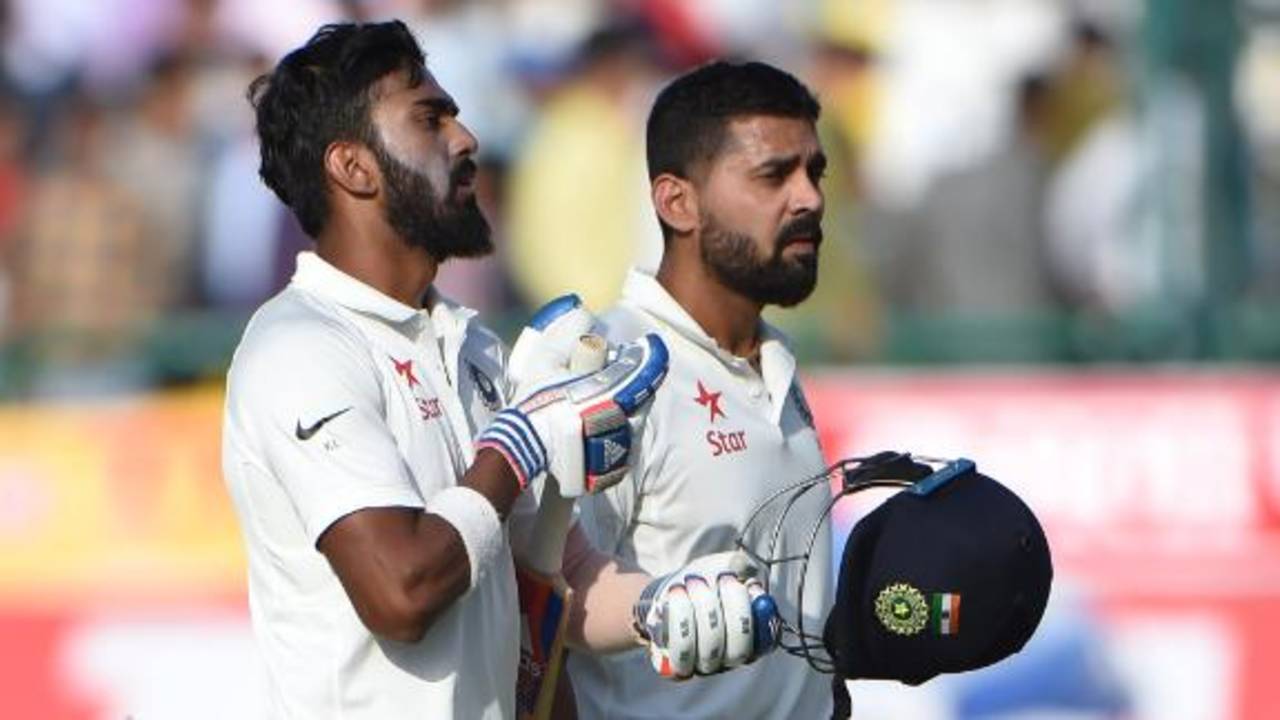The dismal story of India's opening act
In their last nine Test series in South Africa, England, New Zealand or Australia, India's opening partnership has averaged 21, and lasted only 6.3 overs per stand
| Series | Inns | Runs | Ave | 50+ stands | BpD |
| in SA, 2013-14 | 4 | 89 | 22.25 | 0 | 52.75 |
| in Aus, 2014-15 | 8 | 248 | 31.00 | 2 | 49.13 |
| in Eng, 2014 | 10 | 219 | 21.90 | 0 | 43.60 |
| in Eng, 2018 | 10 | 237 | 23.70 | 3 | 40.10 |
| in SA, 2018-19 | 6 | 109 | 18.16 | 0 | 38.00 |
| in Aus, 2018-19 | 4 | 72 | 18.00 | 1 | 36.00 |
| in Eng, 2011 | 8 | 156 | 19.50 | 1 | 34.88 |
| in Aus, 2011-12 | 8 | 125 | 15.62 | 0 | 30.88 |
| in NZ, 2013-14 | 4 | 49 | 12.25 | 0 | 22.75 |


S Rajesh is stats editor of ESPNcricinfo. @rajeshstats
